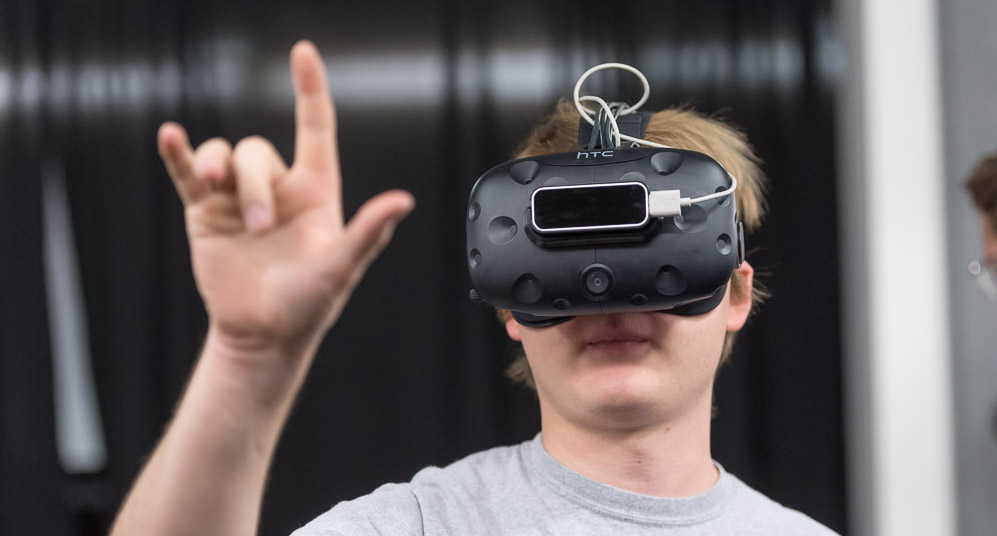
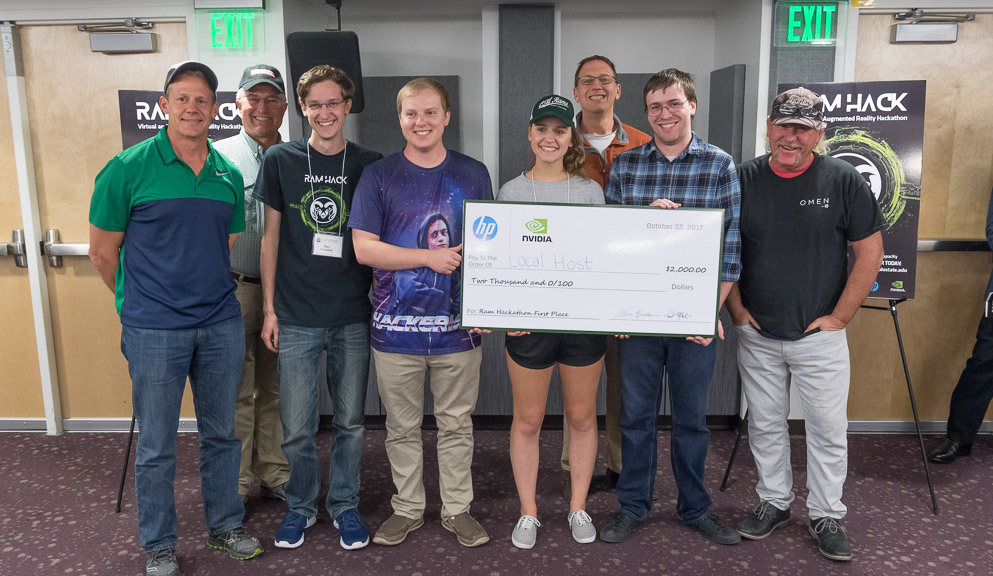
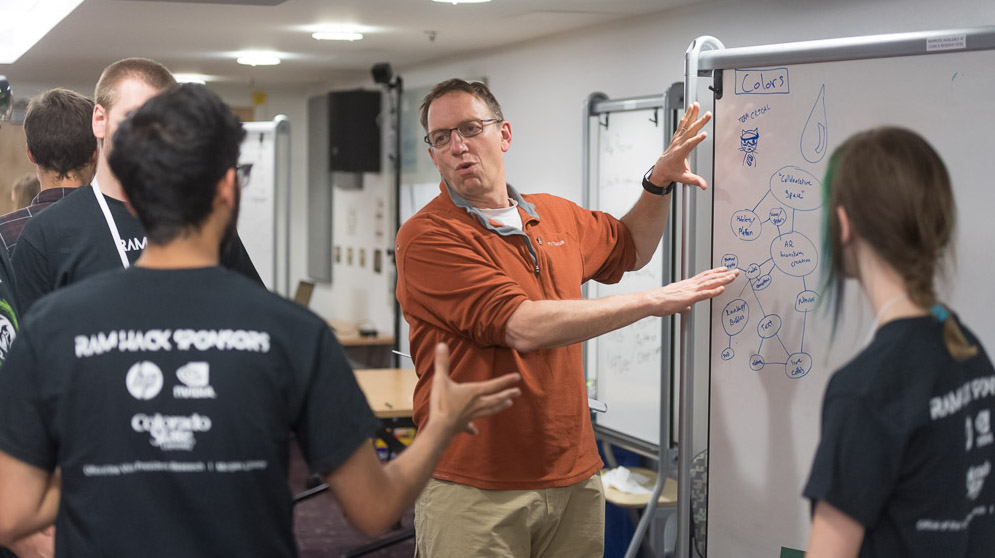
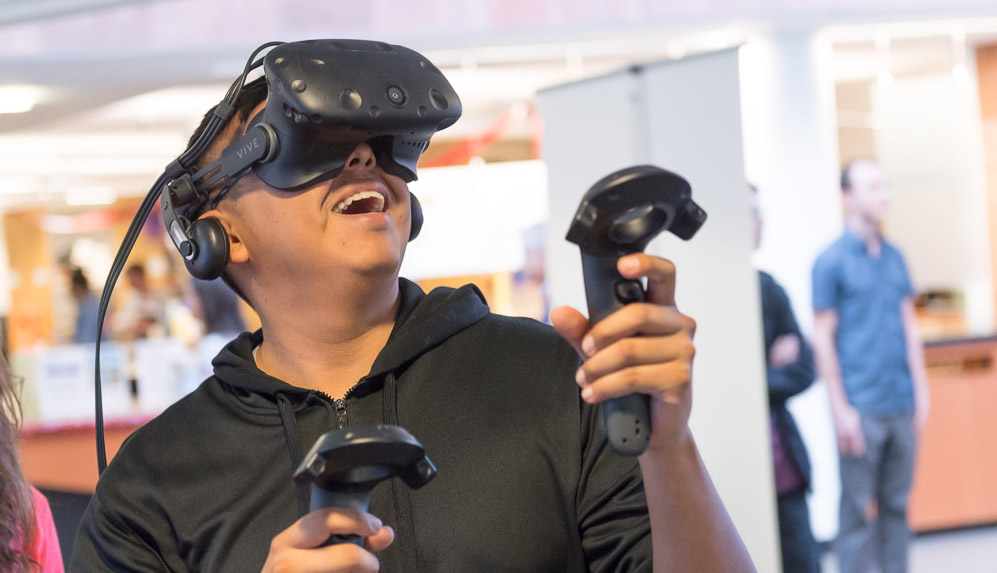
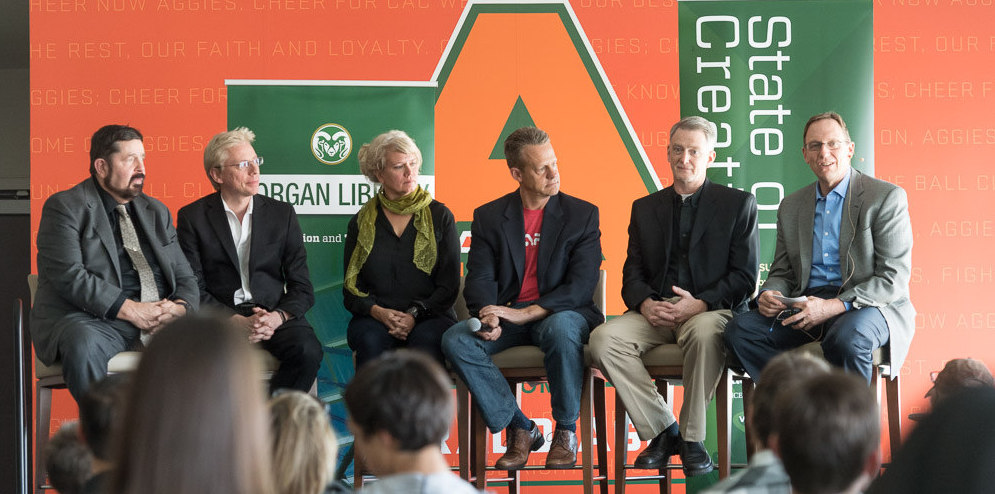
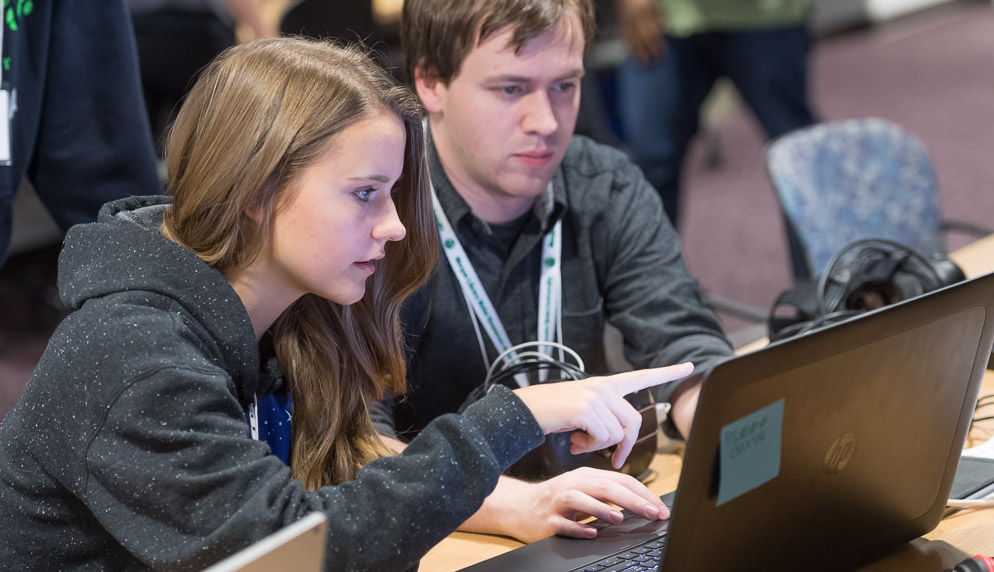
The second CSU Hackathon concluded Sunday, Oct. 22, after seven teams worked over two days to develop their own virtual reality concepts from scratch.
Team “Local Host” won first place with its virtual reality program designed to self-teach American Sign Language.
“Though we have a fun virtual reality game on display today, there are endless applications for the business world,” said Nathan Nuber, a CSU alumnus and software engineer at HP, Inc., which donated the equipment used, at the start of the Hackathon. “It will be great to see what these teams will be able to accomplish in just two days.”
How it worked
The winning program allows users to hold up their hand in front of the virtual reality goggles, which have a sensor that maps the hand in real time while students sign the alphabet. Once a letter is formed, the program recognizes hand positions and shows the letter that was signed through the headset. There is also a large virtual chart on the user’s right, showing the alphabet and their correlating hand signs.
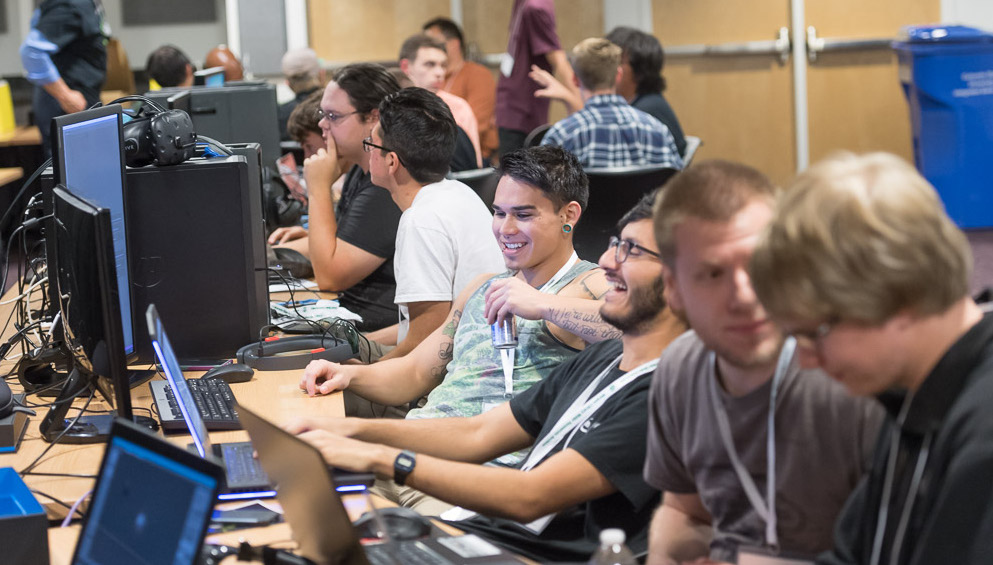
“The Hackathon was so much fun last year, and I’m glad I could be back,” said Ben Campbell, a Local Host team member. “It was great that our team was able to win first place, but I am more excited about how this technology will make an impact on the ASL community.”
The Hackathon had a successful second year as students spent a full weekend building a virtual reality experience. The seven teams started working early in the morning and long into the night, some only getting a few hours of sleep all weekend. Isaiah Smith, a CSU graduate and part of the Hackathon team “Planet X,” reported only being home for a few hours of rest all weekend.
“It is so important that virtual reality is continuously explored and developed,” said Smith. “We have molded a solar system that would allow a classroom of elementary school students enter space with their classmates, but this is just a small taste of what the technology can accomplish.”
Other honors
The “Planet X” group received the Artistry Award for creating an interactive solar system experience that allows the user to travel to different planets to explore facts and learn new things, all without leaving the classroom.
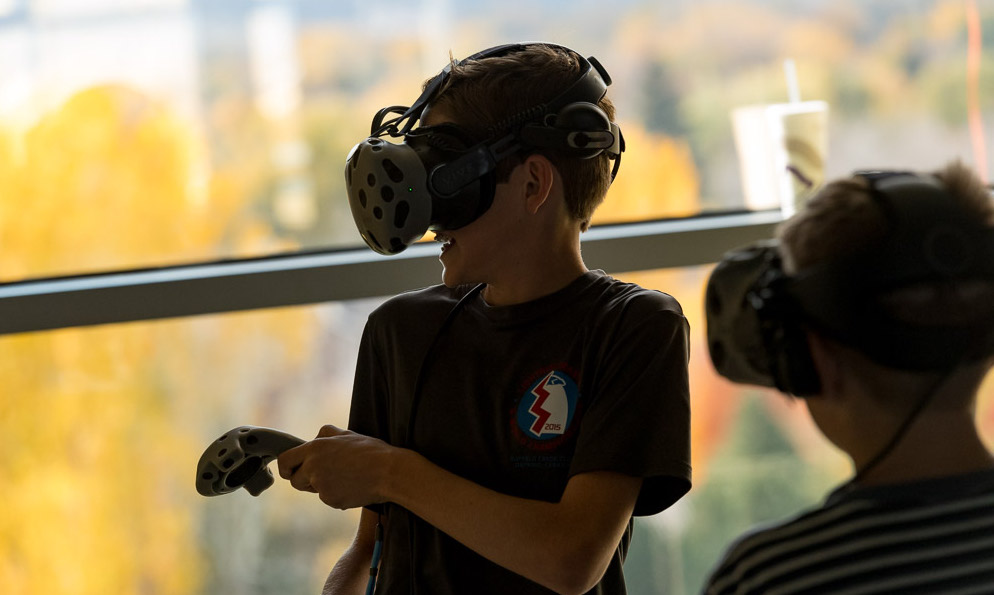
Second place was awarded to “The Scientesters.” This group created a virtual reality laboratory setting where the user combines chemicals and experiences their reactions. One experiment featured the classic erupting volcano, where two mixtures are combined in a small volcano that creates a reaction the user can see through the headset.
“Though this is a simple experiment, we could code an entire lab with every element that would allow students to participate in full courses from their bed,” said team member Alex De Croix. “This program creates a safe environment where everyone can participate, in or out of the classroom.”
Last, but not least, “The Great Firewall” team took third place in the Hackathon with its augmented reality app for smart phones. This app uses the camera on any smartphone to show walking directions to any mapped location, in real time. The app was demonstrated through a video that pointed out individual buildings on campus, including the Lory Student Center, the Clark Building and the Behavioral Sciences Building.
“It is incredible to see the programs and applications that can be created in a matter of hours through this technology,” said Alan Rudolph, vice president for research at CSU and judge of the Hackathon. “Virtual reality is going to change the world, and that’s why it’s so important that we get it into the hands of our students, so we can see what we have to look forward to in the years to come.”